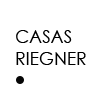Pensamiento escultórico
Participating artists: Feliza Bursztyn, Leyla Cárdenas, Johanna Calle, Danilo Dueñas, César González, Rosario López, María Fernanda Plata, Alex Rodríguez, Luis Roldán, Rosemberg Sandoval, Bernardo Salcedo, Icaro Zorbar.
Nowadays, the term sculpture holds certain ambiguity. Throughout the twentieth century, the artistic category of sculpture remained fragile partly due to the fact that most of the significant accounts of modernist art were articulated in relation to painting. In addition, during the late 1960’s the term sculpture was stretched and made malleable so as to cover highly heterogeneous forms, thus moving away from the so called medium specificity that used to define it. Feeling the need to bring order to the field in which contemporary sculpture operated and attempting to fight the so-called pluralism that characterized much of the art that was being produced after 1968, Rosalind Krauss published her seminal essay “Sculpture in the Expanded Field” (1978).
Besides taking inspiration from the precepts and intentions laid out by Krauss in her famous essay, the exhibition Pensamiento Escultórico is put forward as a space for reflecting about sculpture. By questioning the extent to which sculpture has changed as a result of this transformation from object like to installation-oriented work, the exhibition seeks, among other things, to highlight the body’s experience in relation to the three-dimensional work. The absence of some of the traditional ways of producing sculpture such as carving, casting and modelling, the occasional elimination or renewal of the pedestal, the use of highly charged materials and the act of undoing the substance from which the work is made of, are all strategies that while going beyond the limits of traditional artistic canons, point to a constant rethinking of the artists’ sculptural perspectives.











